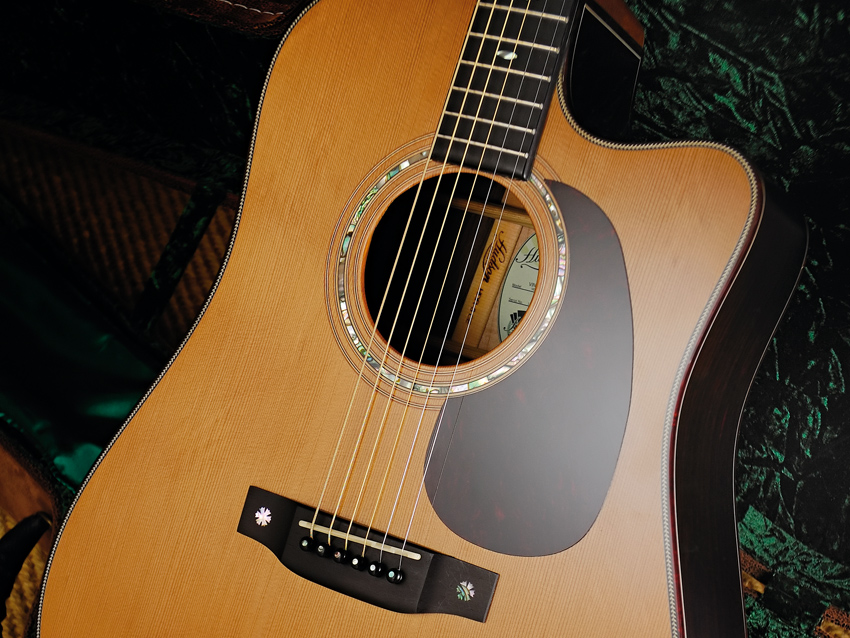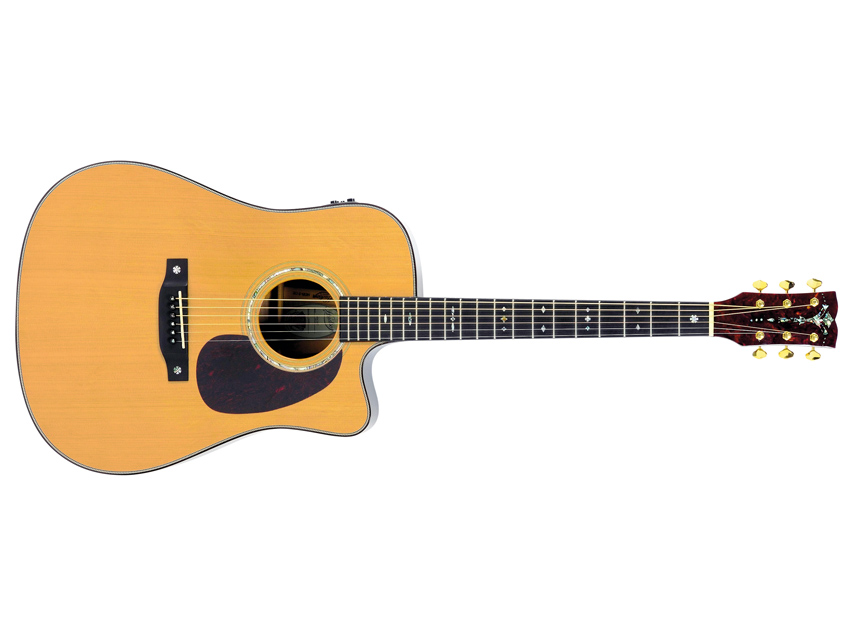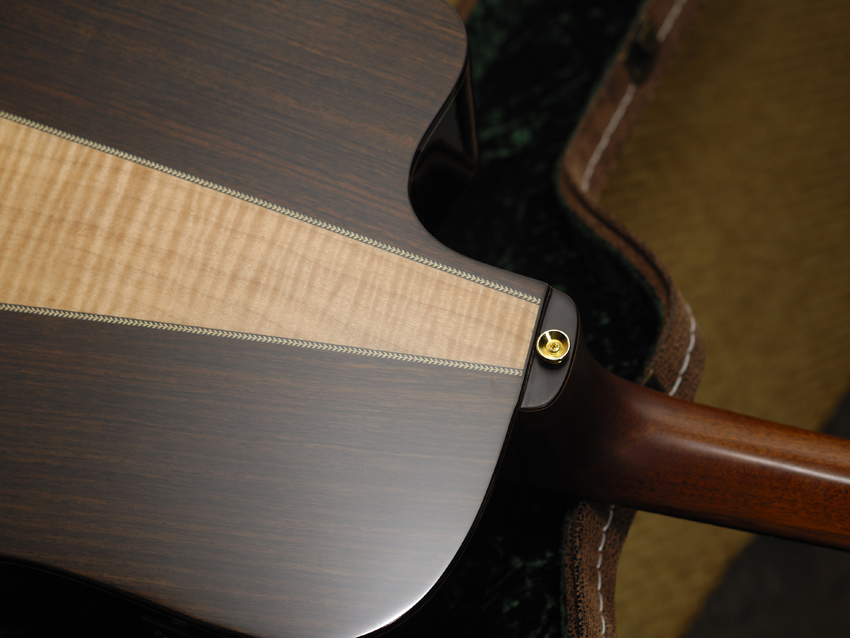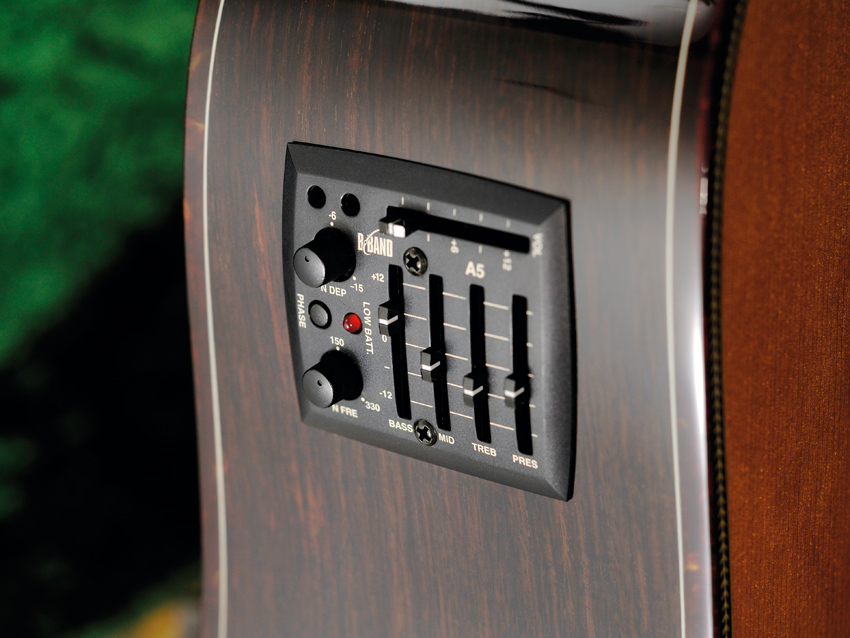MusicRadar Verdict
The HDR-3CE proves that Hudson knows how to build a great sounding, quality acoustic, boasting high-end appointments without the hefty price tag.
Pros
- +
Acoustic tone. Good quality finish. Luxury case.
Cons
- -
Amplified tone. Some will struggle with the neck profile.
MusicRadar's got your back

Hudson HDR-3CE Vincent

Hudson HDR-3CE Vincent

Hudson HDR-3CE Vincent

Hudson HDR-3CE Vincent
Mike Podesta is the owner of Cardiff's Cranes Music Store (one of the oldest music stores in the UK) and an acoustic guitar aficionado.
A few years back, with many years' experience of high-end acoustics under his belt, Podesta embarked on a project to make contemporary and vintage-style instruments more affordable and attainable to all, and Hudson Guitars was born.
"The HDR-3CE off ers one of the most enjoyable sub-£1k dreadnought experiences we've ever had."
The latest additions of Hudson's rapidly growing range are the VE (Vintage Evolution) guitars, which aim to offer all-solid, vintage-style acoustics with a modern twist.
Our review model emanates from the higher echelons of the VE range, with its product code (HDR-3CE) offering an outline of its features: Hudson Dreadnought Rosewood - 3 (top of the range) Cutaway Electro. This particular model also carries the name Vincent.
"I was partly inspired by the beautiful sound of the guitar in the [Don McLean] song, but I also wanted to point to the unique character of this particular guitar," remarks Podesta of the moniker.
The HDR-3CE is an all-solid wood guitar. Darkened with an 'aging hue', the close-grained, cedar top is edged with herringbone and tortoiseshell binding. A stylish yet simple white pinstripe edges the tortie on the guitar's sides, which serves to highlight this dreadnought's smooth lines.
The three-piece back is made from two pieces of good quality rosewood, between which is a herringbone-edged flame maple inverted 'V' insert, last seen on Martin's M3M George Martin special edition.
While a visually striking choice, some claim that inserting a section of maple into the guitar's back increases volume and boosts the mid-range so take note.
African mahogany is used for the one-piece neck, to which an unbound ebony fingerboard is fitted. Abalone has been generously (though not extravagantly) used for the fingerboard, rosewood bridge and headstock inlays, soundhole rosette and bridge pin tops. An inspection of the guitar's interior reveals scalloped, hand-sanded bracing as well as a high standard of finish.
To handle amplified duties, the HDR-3CE comes loaded with a B-Band A5 system. The shoulder-mounted control panel includes sliders for controlling volume, presence, bass, mid and treble. Two rotaries handle notch depth and frequency respectively.
The HDR-3CE benefits from an excellent spec, fine build and traditional design features. Hudson has, though, fiddled a little with the dreadnought rulebook.
Shaped into a 'V' profile, the HDR-3CE's neck is chunkier than you might expect. Also, string spacing is narrower than on a standard dreadnought, measuring 2mm less than a Martin D-18 at the 12th fret. These tweaks won't appeal to everyone, but we think they assist the HDR-3CE in offering something different from the plethora of dreads currently available.
Sounds
The HDR-3CE manages to find an appealing balance between a bright tone full of clarity and smooth, underpinning warmth. There's plenty of plump bottom end with zero woolliness and a strong, lively mid-range that supports riff work and singlenote runs.
While crisp, the higher registers are without brash, metallic overtones and their softness is more forgiving of heavy-handed bullying than you might associate with a cedar top: they tend to have a lower dynamic peak than spruce. Overall, the HDR-3CE offers one of the most enjoyable sub-£1K dreadnought experiences we've ever had.
Plugged in, things are less impressive. The amplified tone is harsh so requires some powerful EQ to smooth it out. It might be that the pickup needs to be better seated, but in this guitar as it is, it's not a match for a good dual-source system that includes a quality internal mic.
Rolling off the presence while scooping out most of the mids and treble softens things up, but it's still a compromise. The upside is that there's plenty of volume, and that this kind of tone and response is well suited to a live rock or pop band mix, where the lilting subtleties of high quality acoustic tones are pretty much lost anyway.
The Hudson Guitars brand isn't perhaps as well known as it should be and for many this will add to its appeal. Our HDR-3CE is very well made, uses good quality materials and offers something a little different from the more well-known brands.
Acoustically, the HDR-3CE excels, and for that reason we'd suggest that the 'dry' HDR-3NA (without pickup) version would be a fantastic acquisition, while at the same time saving you over £100.
Steve Harvey is senior content producer for Pro Sound News and also contributes to other Future brands. He has worked in the pro audio industry — as a touring musician as well as in live production, installed sound, and equipment sales and marketing — since November 1980.
“He seems to access a different part of his vast library of music genre from the jukebox-in-his-head! This album is a round-the-world musical trip”: Joe Bonamassa announces new album, Breakthrough – listen to the title-track now
"The Rehearsal is compact, does its one job well, and is easy to navigate without needing instructions": Walrus Audio Canvas Rehearsal review
“The EP635 delivers the unmistakable high-gain aggression and clarity that Engl fans love”: Engl packs its iconic Fireball head into a compact dual-channel stompbox with onboard noise gate and IR support









